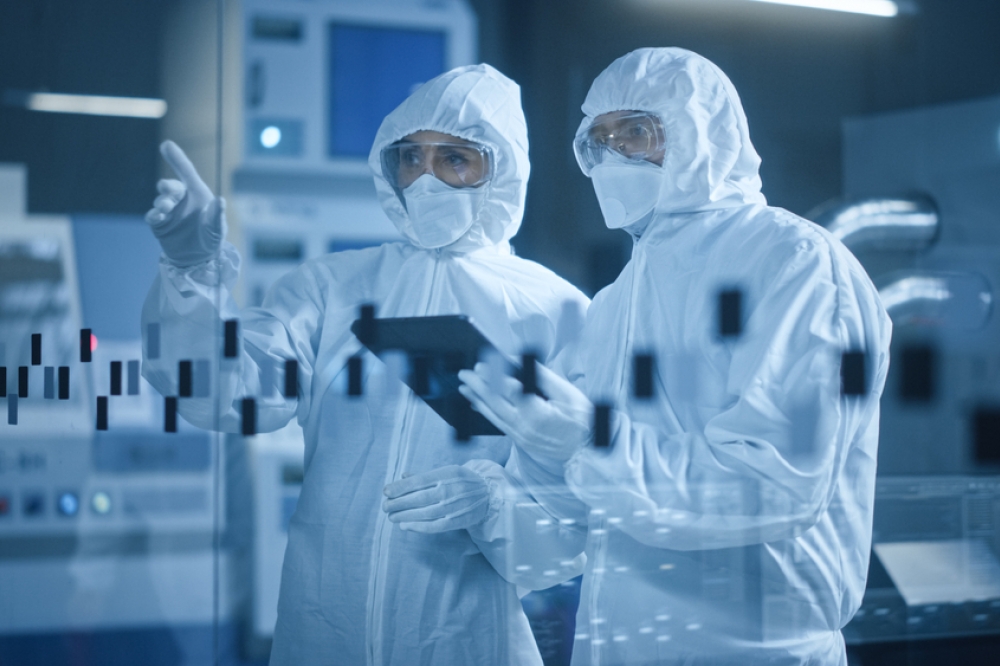Semiwise leads Virtual Reality Semiconductor Training Fab consortium

Semiwise, in partnership with The National Microelectronics Institute (a division of Techworks) and Pragmatic Semiconductor Limited, has secured a grant from Innovate UK to develop a Virtual Reality Semiconductor Fabrication Training Facility (VRSFT).
Building an advanced semiconductor fabrication facility typically incurs a cost ranging from $10 billion to $20 billion. The expense of a single deep EUV stepper, at $500 million, exceeds that of an Airbus A380. Consequently, the challenge arises of how to train individuals to work within a costly semiconductor fabrication facility without imposing a burden on vital resources within an existing facility or constructing a new educational one. The solution mirrors the approach employed in training pilots to operate an Airbus A380: the use of virtual reality simulators.
Semiwise, in partnership with The National Microelectronics Institute (a division of Techworks) and Pragmatic Semiconductor Limited, secured a grant from Innovate UK to develop a Virtual Reality Semiconductor Fabrication Training Facility (VRSFT). Synopsys and Denova are subcontracted for this venture. Through virtual reality (VR), we intend to craft an immersive VR model of a contemporary fabrication facility featuring lifelike representations of the equipment, which can be operated analogously to flight simulators.
Upon initial evaluation, given the available funding of £500,000, this project may seem overly ambitious. Developing the Airbus A380 flight simulator required several years and approximately €20 million in expenditure. Fortunately, the Technology Computer-Aided Design (TCAD) process simulation tool, "Sentaurus Process Explorer," can simulate the operation of crucial equipment used in semiconductor device manufacturing. Synopsys will provide their Technology Computer Aided Design (TCAD) software and establish connections with key equipment manufacturers. This approach enables us to create an advanced training simulator without necessitating substantial initial capital investment and time allocation.
Professor Asenov, CEO of Semiwise, expressed his belief: "We consider this approach to be one of the most effective means of training and up-skilling engineers for work in the semiconductor industry. This initiative will propel the UK to the forefront of semiconductor education, as to the best of our knowledge no comparable program exists anywhere in the world."
Charles Sturman, CEO of Techworks, emphasised the significance of the project: "This project constitutes a vital component in ensuring the success of the UK Semiconductor Initiative. The UK possesses the potential to emerge as a global leader in semiconductor R&D and training, owing to its world-renowned universities and robust academic presence."
Clare Hodcroft, Vice President of People at Pragmatic Semiconductor, highlighted the potential global impact of virtual reality training: "As the sector innovates and develops new technology, like Pragmatic’s flexible integrated circuits, the global demand for skills will continue to grow. Virtual reality training has the potential to accelerate adoption of this technology, both in the UK and worldwide."
As reported by Electronics Weekly, the chip industry anticipates a need for over 1 million additional employees by 2030. With training costs ranging from $20,000 to $50,000 per employee, this forecast translates to a training revenue potential ranging from $20 billion to $50 billion for universities and training institutions.
The commencement of this project coincides with Semiwise's participation in the ARM-led Semiconductor Education Alliance.
This Virtual Manufacturing Based Power Electronics Design and Manufacturing Training Courses project was supported by the UKRI’s Driving the Electric Revolution Challenge that is delivered by Innovate UK challenge fund who awarded funding through the Building Talent for the Future 2 opportunity.

































